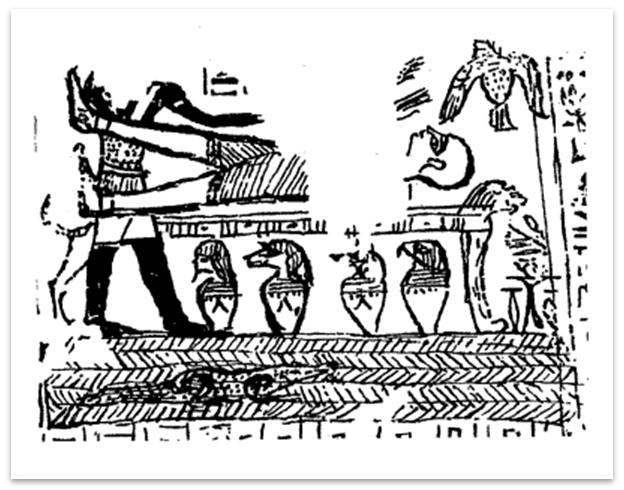Shulem wrote: Now take into consideration the Facsimile No. 1. The rising of Osiris took place on earth where his wife received him in order to conceive Horus. There is no motif of stars because it's not a heavenly scene. The motif is that of the Nile and the niched bricking or carved stones signifies the temple walls adjacent to the Nile where the river crocodiles are ever present.
All glory to Osiris my lord!
And now, to demonstrate that Smith and his comrades were not entirely ignorant about some of the finer matters that were known to educated people of his day. And in doing this it shows that Smith was WRONG in his Facsimile interpretations when he should have known better, especially if revelation was really coming from God. Apologists make a big deal that Smith got the crocodile correct in Facsimile No. 1, which is no big deal seeing it was his only bullseye, per se. But had he not got that right it would have simply meant he was stupid and surrounded by totally ignorant people but neither was the case. Smith was highly intelligent and he had some pretty smart guys to consult with in regards to the vignettes.
Now, with that said, here is a clip from the Times and Seasons which might suggest that Smith should have properly labeled Osiris and Isis in Facsimile No. 3. But as it was, the only thing Smith got right in Facsimile No. 1 was the crocodile and that's a no-brainer! The following is from John Greenhow a faithful member from England who sent a letter to the Times and Seasons editor for publishing in the Church periodical. At least someone in the Church knew who Osiris and Isis were! But Smith had already published the Book of Abraham so it was too late to recant.
TIMES AND SEASONS. CITY OF NAUVOO, ILL. FEB. l , 1844. wrote:
For the Time Seasons.
The Egyptians had a number of ideal Gods, to whom they erected temples of prodigious size and architectural splendor. The principal of these deities were Osiris and Isis, which are thought to be typical of the sun and moon. But they also offered worship to various creatures, as the ox or bull, with divers animals, birds, &c. They likewise paid adoration to the Nile, personifying it in the crocodile, to which temples were erected, and priests set apart for its service.
<snip>
We as a church have nothing to boast of, for it is God that has made the difference in raising up a prophet to instruct his people, for of ourselves we know nothing, and should we be left without a man of God to direct us, we should soon become weak as other men; therefore to him be the glory, for now we can sing with the poet:
<snip>
I remain as ever, your affectionate brother in the new covenant, JOHN GREENHOW.



